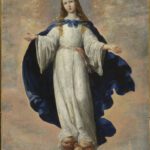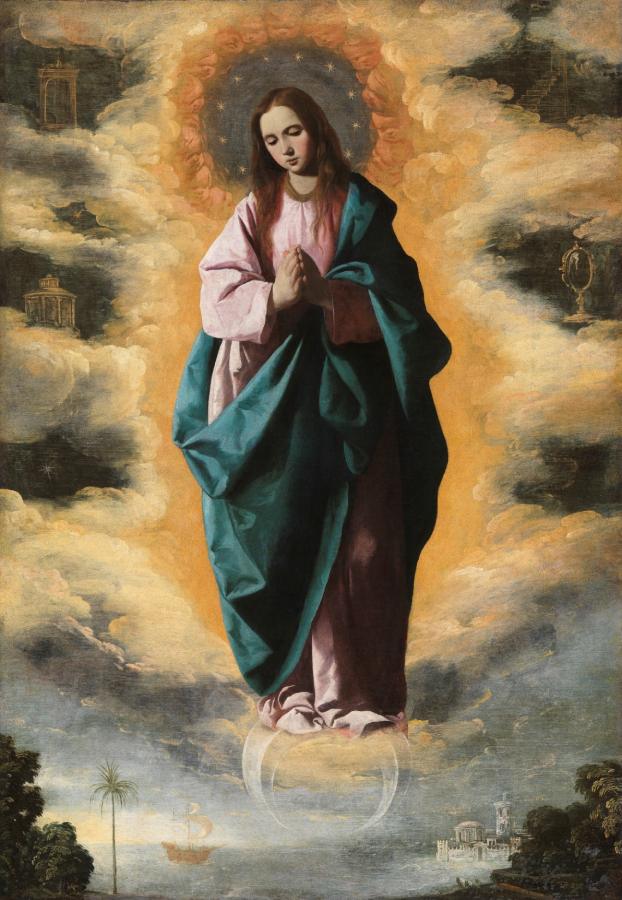Zurbarán, Francisco de (1598-1664)
La Inmaculada Concepción (Immaculate Conception)
1628–1630
Oil on canvas, 128 x 89 cm
Museo del Prado, Madrid
The worship of the Immaculate Virgin is one of seventeenth-century Spain‘s identity traits, especially following a considerable argument between her defenders and her detractors, which took place in Seville in 1616. From then on, that city became one of the country’s leading Conceptionist centers and its painters dedicated much of their energy to promote that devotion. Zurbarán was one of the most active artists in that sense. He made various works on that subject, like the present one, which is one of his earliest compositions. It depicts his characteristic girlish and ecstatic image of the Virgin. She appears with her hands joined in prayer, surrounded by symbols of the litanies that recall the virtues accompanying the image of the Virgin. The abundance of those complex signs, which must be understood theologically, offers the faithful two possible ways of approaching this work: that of the extremely complex doctrinal manifesto understood by a limited number of specialists, and the votive image of a handsome and childlike Mary whose appearance can awaken the fervor of even the least sophisticated believers. (MNP)
Compare:
 Zurbarán, Francisco de (1598-1664)
Zurbarán, Francisco de (1598-1664)
La Inmaculada Concepción
1661
Museum of Fine Arts, Budapest
